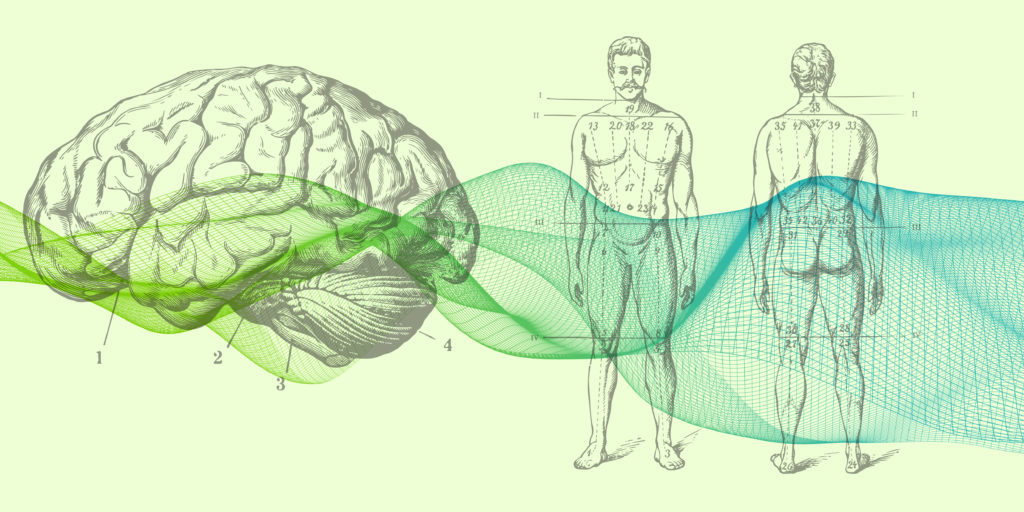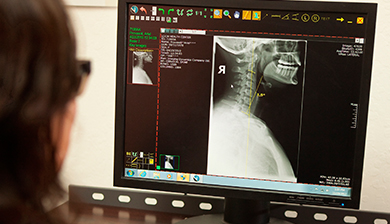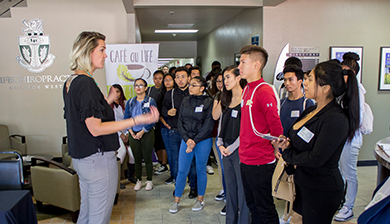Increasingly, policies from different chiropractic research groups and associations around the world are encouraging practitioners in the industry to focus on musculo-skeletal research to support their practice.
Deed Harrison, DC, is a chiropractor who has spent the last decades conducting research in the spinal-neuro space. His research highlights important spinal modeling studies that have been published, which informs directly how adjusting vertebral subluxations can improve neurophysiological conditions.
Dr. Harrison wrote in an email that, recently, researchers led by Professor Ibrahim Moustafa (Sharjah University, UAE) and Dr. Harrison (CBP NonProfit, Idaho) have completed a series of randomized clinical trials, which were designed to test the hypothesis that structural correction of the cervical sagittal alignment will improve pain, disability and neurophysiology measurements. Two of the studies found that restoration of the cervical lordosis toward the 20° magnitude concomitantly improved dermatomal somato-sensory-evoked potentials and the H-reflex in patients with both cervical spine and lumbo-sacral radiculopathy and chronic pain.
In two trials by this team, the effect of sagittal rehabilitation of the cervical spine on central nervous system latency (velocity) and amplitude was assessed. Correction of the cervical sagittal lordosis and head posture was found to statistically correlate to improvement central conduction time (spinal cord velocity) as measured with the N13-N20 potential, he wrote. These are the first studies to identify a statistically significant increase in the central nervous system’s conduction velocity resulting from correction of the subluxated cervical spine. It’s worth noting, he added, that traditional conservative interventions did not improve sagittal alignment and did not improve neurophysiology, even though they were associated with temporary pain and disability improvements. Only the group receiving specific extension traction methods were found to have statistically significant improvement in spine alignment, neurophysiology and long-term pain and disability outcomes.
Here is a sampling of the studies Dr. Harrison recommends reading:
Determining the relationship between cervical lordosis and neck complaints
McAviney J, Schulz D, Bock R, Harrison DE, Holland B
CONCLUSION: We found a statistically significant association between cervical pain and lordosis < 20 degrees and a “clinically normal” range for cervical lordosis of 31 degrees to 40 degrees. Maintenance of a lordosis in the range of 31 degrees to 40 degrees could be a clinical goal for chiropractic treatment.
Harrison DE, Harrison DD, Janik TJ, William Jones E, Cailliet R, Normand M
CONCLUSIONS: The stresses in kyphotic areas are very large and opposite in direction compared to a normal lordosis. This analysis provides the basis for the formation of osteophytes (Wolff’s Law) on the anterior margins of vertebrae in kyphotic regions of the sagittal cervical curve. This indicates that any kyphosis is an undesirable configuration in the cervical spine. Relevance. Osteophytes and osteoarthritis are found at areas of altered stress and strain. Axial and flexural stresses at kyphotic areas in the sagittal cervical spine are abnormally high.
Ibrahim Moustafa, Moustafa, Diab A, Ahmed A, Deed Eric Harrison
CONCLUSIONS: Improved lordosis in the study group was associated with significant improvements in nerve root function, VAS rating, and translational and rotational motions of the lower cervical spine. Only in the study group were the results maintained at long-term follow-up. Implications: Appropriate physical rehabilitation for CSR should include cervical sagittal curve correction, as it may to lead greater and longer lasting improved function.
Ibrahim M. Moustafa, Aliaa A. Diab, Fatma Hegazy, Deed E. Harrison
CONCLUSION: The addition of the Denneroll cervical orthotic to a multimodal program positively affected CMCPS outcomes at long term follow-up. We speculate the improved sagittal cervical posture alignment outcomes contributed to our findings.
Moustafa IM, Diab AA, Taha S, Harrison DE
CONCLUSIONS: The addition of the Denneroll cervical orthotic device to a multimodal program positively affected discogenic CR outcomes at long-term follow-up. We speculate that improved cervical lordosis and reduced AHT contributed to our findings.
About Deed Harrison, DC
Deed E. Harrison, DC, graduated from Life West Chiropractic College in 1996. He is President of Chiropractic BioPhysics Technique and the CBP® Nonprofit, Inc., a research foundation, and a highly respected chiropractic researcher and authority in today’s profession. Dr. Harrison has developed and researched original spinal rehabilitation procedures and has lectured to thousands of chiropractors in more than 700 educational conferences around the world. He has authored approximately 160 peer-reviewed spine-related publications, seven spine textbooks and numerous conference presentations. He directs one of the largest privately owned chiropractic facilities in the United States.










